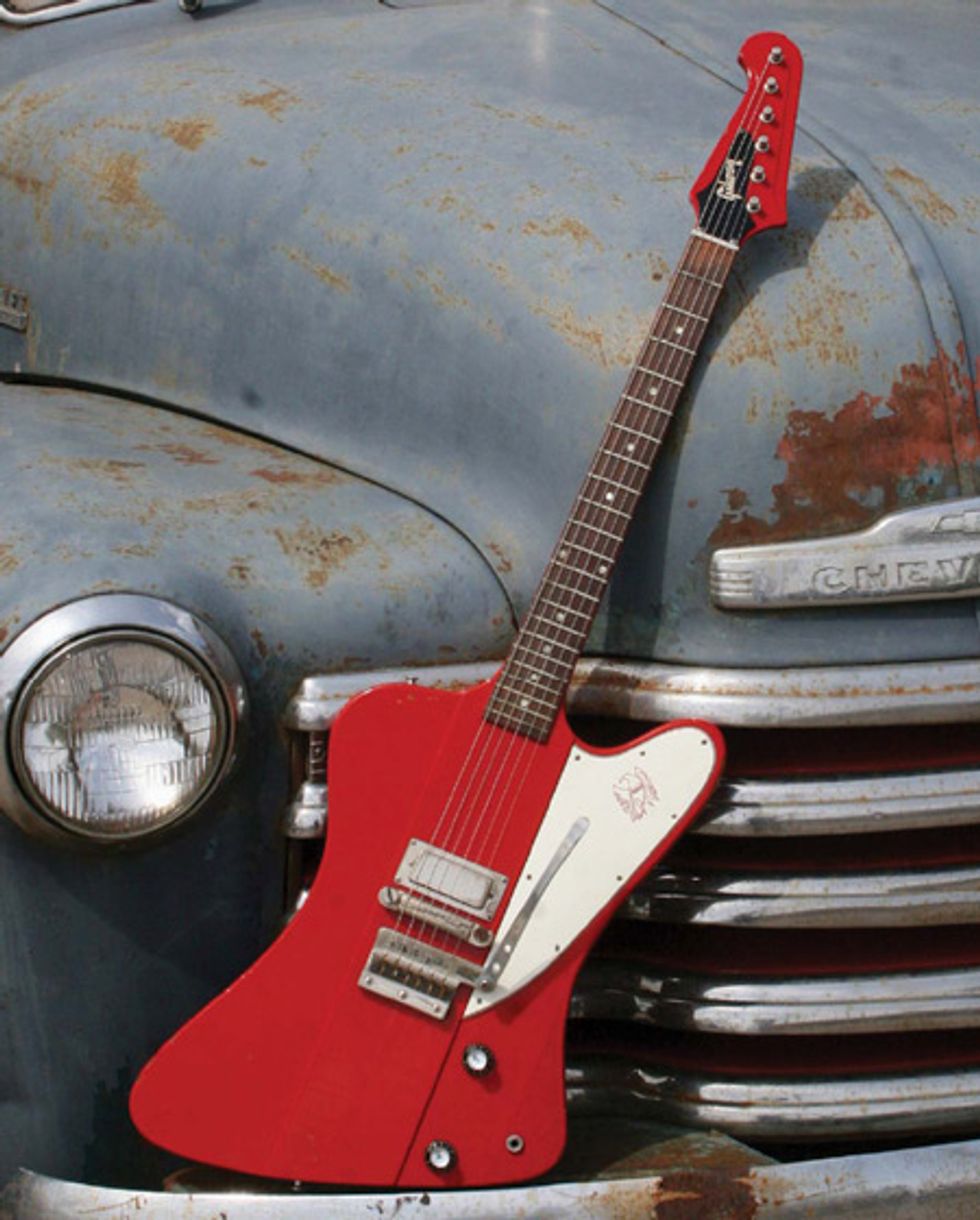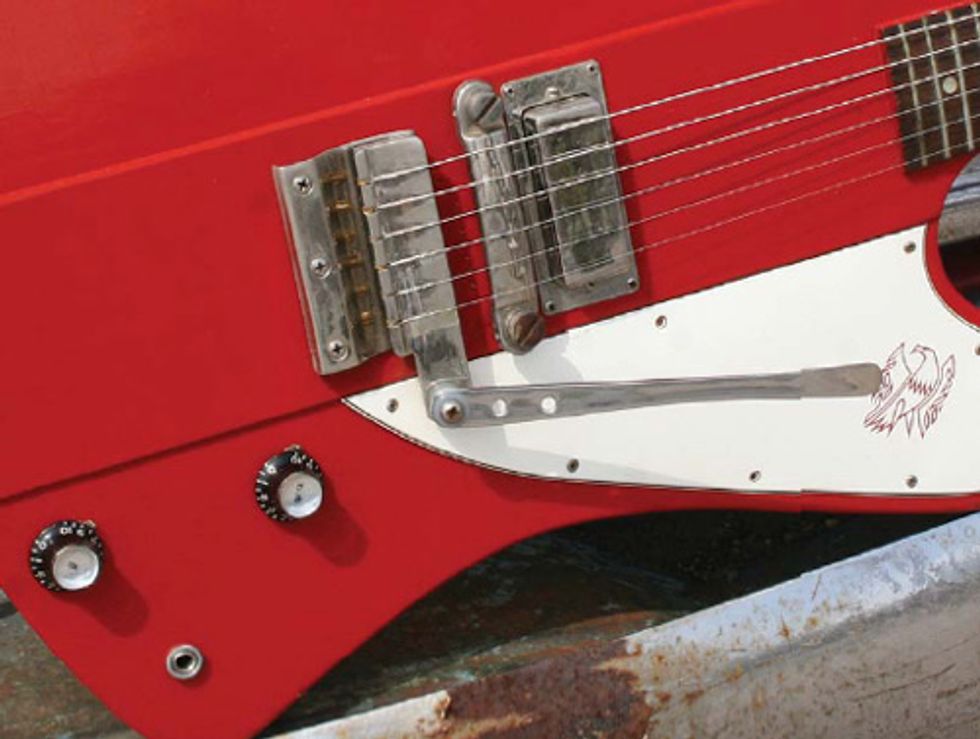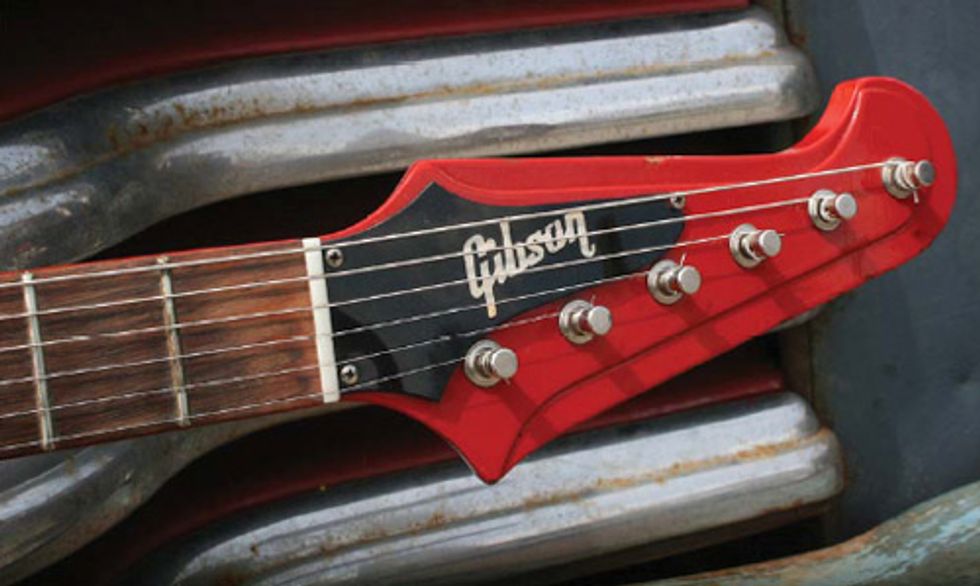
Given that the Gibson Firebird line was developed with the help of car designer Ray Dietrich,
it’s no wonder it looks so good next to this 1950 Chevrolet Deluxe 5 pickup.
In the early 1960s, Fender’s increasingly popular solidbodies compelled Gibson to develop new strategies to reach young guitarists. While the SG series helped Gibson’s sales, company managers knew they needed even bolder guitars in their catalog if they wanted to reach an emerging generation of rockers. In an effort to go head-to-head against Fender’s Jazzmaster, Gibson turned to Ray Dietrich, a famous Detroit automobile designer, to help create an entirely new line.
Introduced in the spring of 1963, the new Firebird series consisted of four guitars (the Firebird I, Firebird III, Firebird IV, and Firebird VII) and two Thunderbird basses (the Thunderbird II and Thunderbird IV). The Firebirds had a unique, asymmetrical body shape consisting of two mahogany “wings” attached on either side of a long mahogany neck that ran all the way to the bottom strap button. Seth Lover designed the Firebird’s mini-humbucker pickups, and in a departure from Gibson’s traditional three-on-a-side array, six banjo-style tuners were positioned in a row along the right side of the headstock (the opposite side of Fender’s iconic arrangement). The standard finish for these guitars was a dark tobacco sunburst, but you could also order 10 custom colors that imitated Fender’s palette, only with different names.

This ’64 Firebird I sports a Seth Lover bridge-position mini-humbucker, Volume and Tone controls, a compensated bar bridge, a Vibrola tailpiece, and an engraved Firebird logo on the pickguard. Vintage Firebirds have a distinctive neck-through-body design consisting of two mahogany “wings” attached to an extended, multi-ply mahogany neck that runs from the headstock to the tail end of the lower bout.

This Firebird has nickel banjo-style tuners mounted on the right side of the headstock.
The Firebird I pictured this month—serial number 191966—has features common to the entry-level Firebirds made in 1964. These include a mini-humbucker in the bridge position, a 24 3/4" scale, an unbound rosewood fretboard with dot inlays, a compensated bar bridge, and a short Vibrola tremolo. This guitar is finished in a vibrant cardinal red.
To learn more about Firebirds and other Gibsons of the ’50s and ’60s, check out Gibson Electrics - The Classic Years by A.R. Duchossoir.
Dave ’s Guitar Shop
Dave Rogers’ collection is tended by Laun Braithwaite and Tim Mullally and is on display at:
Dave’s Guitar Shop
1227 Third Street South
La Crosse, WI 54601
davesguitar.com
Photos by Mullally and text by Braithwaite.












![Rig Rundown: Russian Circles’ Mike Sullivan [2025]](https://www.premierguitar.com/media-library/youtube.jpg?id=62303631&width=1245&height=700&quality=70&coordinates=0%2C0%2C0%2C0)




